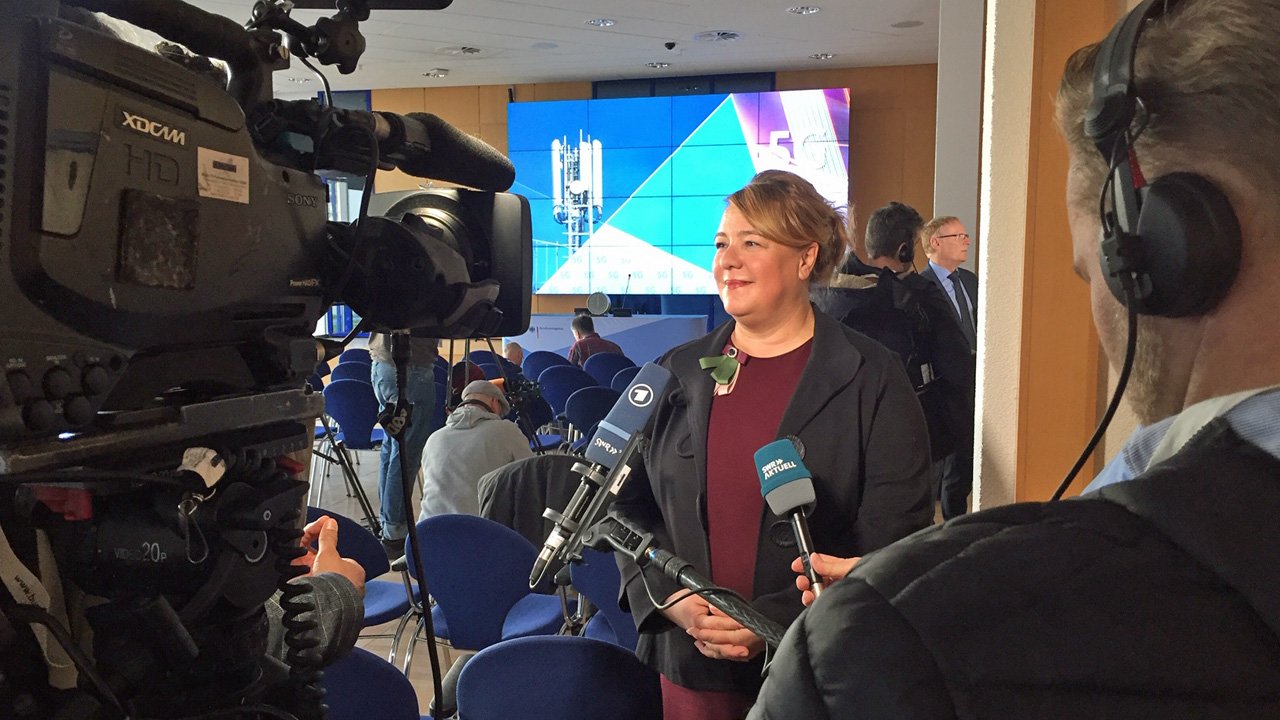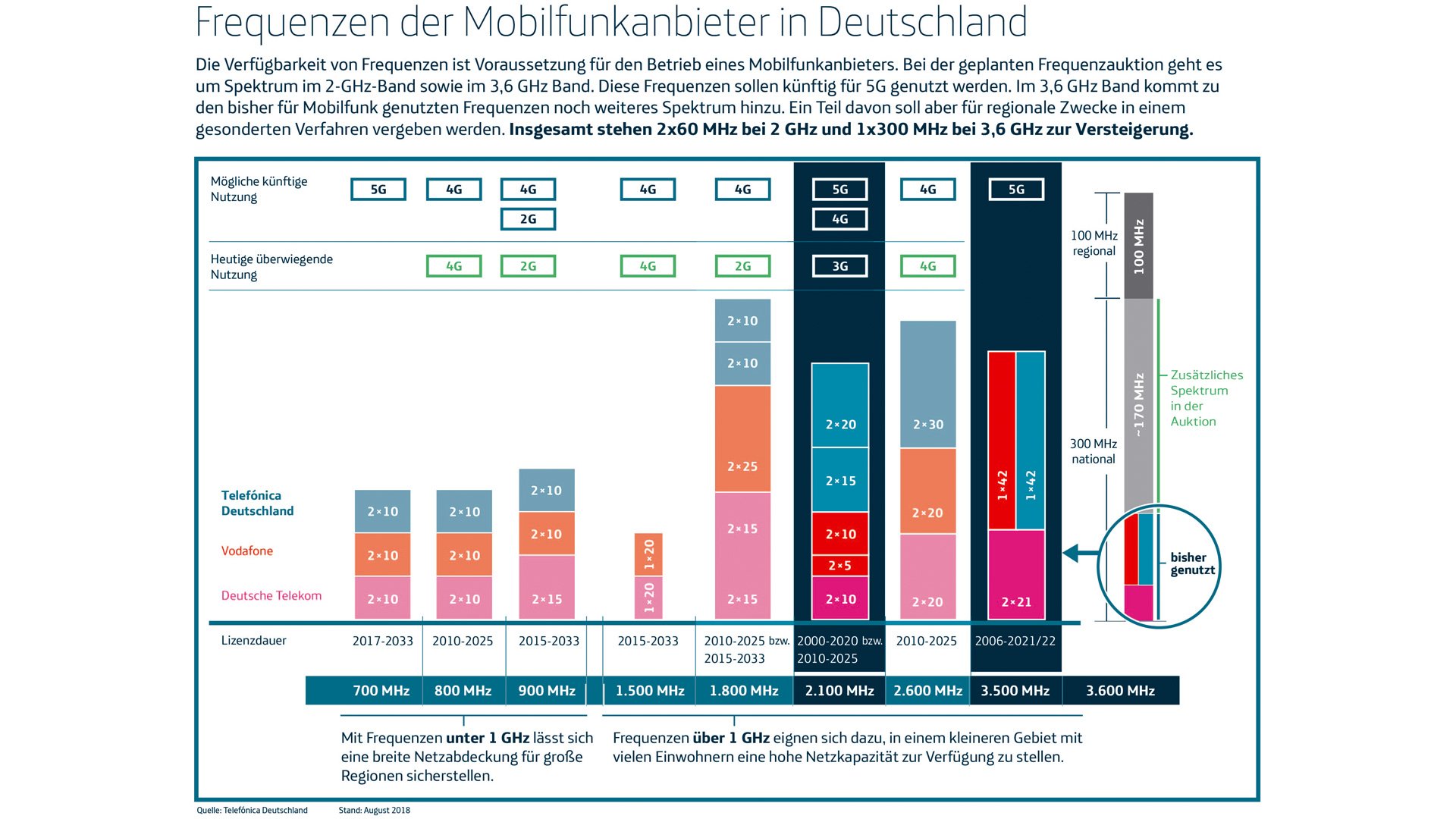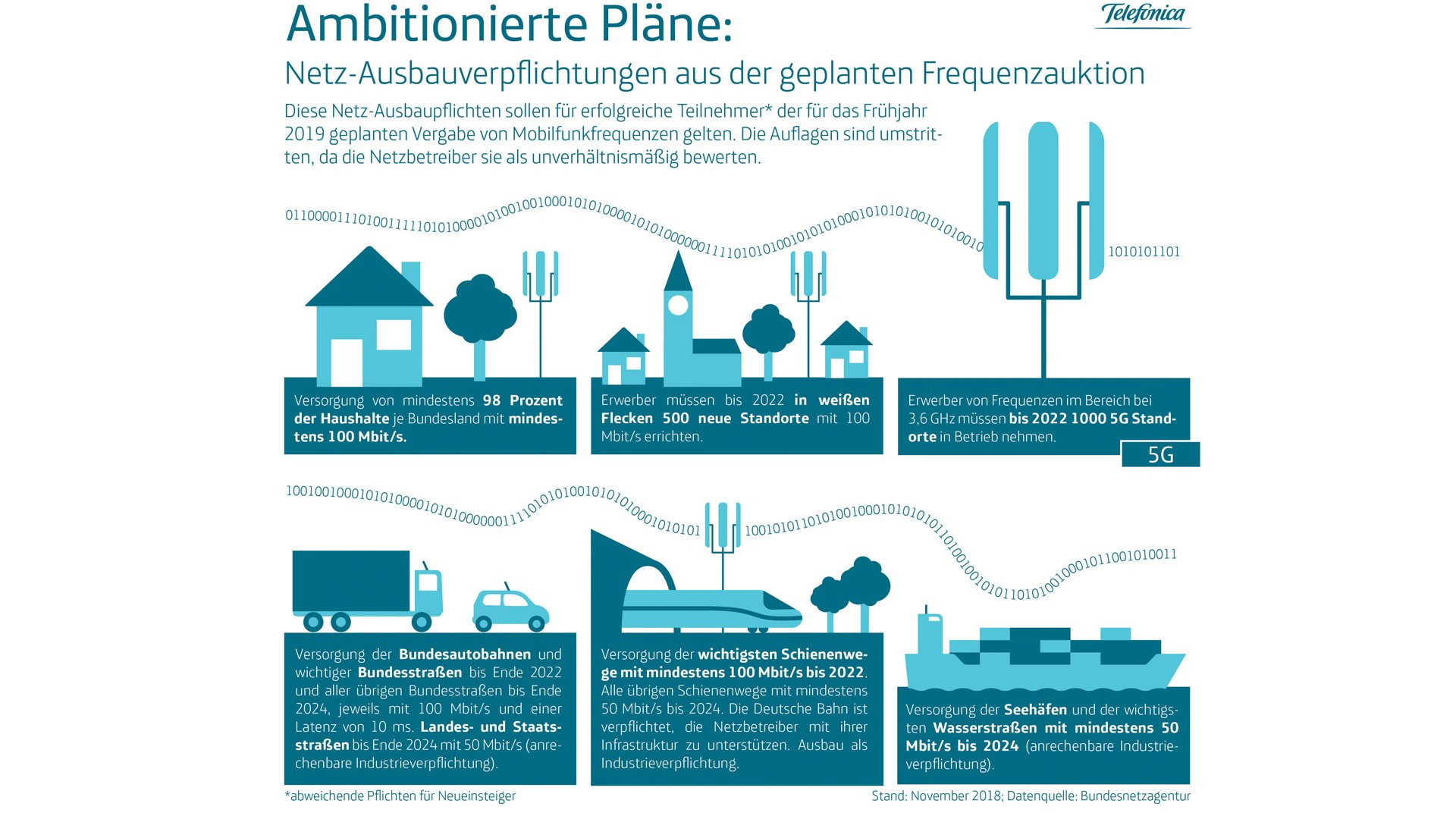19.03.2019
5G frequency auction starts
The auction of the 5G frequencies started on 19 March at the premises of the Federal Network Agency in Mainz. In the course of the auction 420 MHz from the ranges 2 GHz and 3.6 GHz will be auctioned in 41 blocks.

Valentina Daiber
Four bidders participate in the auction: the mobile network operators Telefónica Deutschland, Telekom and Vodafone as well as Drillisch Netz AG (1&1). The frequencies are to form the basis for the 5G rollout in Germany. The procedure was legally controversial in advance. Following the rejection of 4 urgent applications from the telecommunications industry, nine regular legal proceedings are still pending against them.
On 15 March, the Cologne Administrative Court rejected the urgent applications filed by Telefónica Deutschland and other competitors against the planned auction procedure. As a result of this decision, there is now a lack of legal clarity, comments Valentina Daiber, Member of the Executive Board for Legal Affairs and Corporate Affairs, on the fringes of the kick-off event in Mainz: "It would have been urgently necessary for all parties involved and in particular the investing companies to create legal clarity and an auction design with appropriate investment incentives as far as possible before the start of the auction".

Markus Haas
"We are entering the forthcoming frequency allocation from a position of strength; after all, we connect most people in Germany with our mobile services. We are confident that we will acquire valuable spectrum at the auction," said CEO Markus Haas at the start of the auction. "In the interests of our customers, shareholders and society, we will make a significant contribution to the further expansion of the digital infrastructure. 5G will support us in the planned development of the largest and most modern mobile network in Germany and will be of great importance for our vision of the Mobile Customer & Digital Champion". The future 5G mobile communications standard will open up completely new fields of application thanks to further increases in transmission speeds and lower latency times. This is particularly elementary for the economy in the context of Industry 4.0. At a later date, this performance boost will also be noticeable in private use.

Frequencies and mobile operators in Germany as of August 2018 (in German)

Commitments for expanding the mobile networks as a result of the frequency auction 2019 (in German)